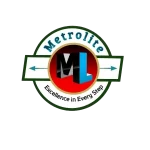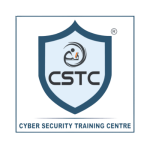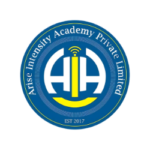The G.R.O.W.T.H. Framework for Outsized Results
Let me ask you something. When was the last time you searched for a product or service without using your phone?
Exactly. Your customers are doing the same thing. They search. Scroll. Compare. And they make decisions fast. If your small business isn’t showing up online, obviously, it’s missing out.
This isn’t just a trend. It’s the essential formula for growth: Visibility + Trust + Conversion.
You don’t need a massive budget or a marketing degree. You just need the right framework. In short, digital marketing levels the playing field, allowing you to compete with giants at a fraction of the cost.
The New Reality: From Yellow Pages to Smart Screens
They’re not reading the Yellow Pages. Instead, they’re on Google, Instagram, and in their inbox.
The key question is: Are you in the right place at the right time?
Digital marketing gives you the power to reach the specific people already looking for what you offer. For example, a local coffee shop needs to focus on Instagram Stories and Google Maps, while a consultant needs LinkedIn and a killer email sequence.
Your success isn’t about going viral; ultimately, it’s about being useful and consistent where your ideal customer lives.
Test your small-business marketing knowledge and discover areas to improve.

5 Pillars of Digital Strategy for the Small Business Owner
Forget trying to master 15 different channels. Rather, focus your limited time and budget on these five high-leverage pillars.
1. Pillar One: Own Your Corner with Local SEO
SEO isn’t just for tech companies. First thing to remember: It’s about being found when a customer needs you right now.
- Google Business Profile (GBP): This is your digital storefront. Claim it, optimize it with high-quality photos, hours, and services, and use keywords like “dog groomer near me” in your description.
- Reviews are Currency: Ask every happy customer for a Google review and reply to every single one. This builds E-E-A-T locally and drives immediate foot traffic.
- Embed Maps: Place a Google Map on your contact page for easy directions. In brief, make it impossible to miss you.
2. Pillar Two: Build Authority with Content That Solves Problems
Every good piece of content solves a problem. Therefore, stop talking about yourself and start answering the questions your customers are typing into Google.
- The Intent Test: Ask: “What questions are they frustrated by?” A plumber shouldn’t blog about copper pipes; he should make a 30-second video: “3 Signs Your Pipes Are About to Burst.”
- Blog to Video: Repurpose your helpful blog posts into short-form videos (Reels/Shorts). This maximizes reach without requiring more content creation time.
- Update for Trust: Audit your content monthly. Update old information to keep it accurate and search-friendly. This signals expertise to both Google and your reader.
3. Pillar Three: Your Safety Net, The Owned Channel
Algorithms shift, platforms change, but your email list is yours. As a result, email marketing is your highest-ROI channel.
- Offer Value: Create a clear Lead Magnet (e.g., a “5-Minute Checklist,” a discount) to collect emails on your site.
- Nurture, Don’t Just Sell: Send one email per week with tips, short stories, or behind-the-scenes content. Remember, personalization makes customers feel valued.
- Automation is Key: Use a free tool like Mailchimp or ConvertKit to automate a welcome sequence.
4. Pillar Four: Social Media for Utility, Not Virality
You don’t need to go viral. You need to be useful and consistent on the one platform your audience uses.
- Pick Your Platform: Consultants on LinkedIn. Retail on Instagram/Pinterest. Choose one and focus.
- Content Calendar: Use three simple post types: 1) Behind-the-Scenes, 2) Product Highlights, and 3) Customer Stories.
- Engage Daily: By comparison, replying to a comment takes seconds but builds loyalty faster than any ad.
5. Pillar Five: Budget-Smart Ads & CRO
Paid ads give you instant visibility, but only if you track them. Your small budget demands a smart strategy.
- Start Small and Test: Set a test budget of $20–$50 for 7 days on a single platform (Google Ads for intent, Meta Ads for targeting). Create one clear campaign and monitor daily.
- Conversion Rate Optimization (CRO): This is where you stop wasting money. CRO means making small tweaks to your site to turn visitors into buyers. Specifically, monitor bounce rates and conversion goals weekly. If clicks are high but sales are low, fix your CTA or landing page!
Your Strategic Roadmap: The Proven G.R.O.W.T.H. Framework
Feeling overwhelmed? Don’t be. We use the G.R.O.W.T.H. Framework to make digital marketing manageable and measurable.
- G – Groundwork Discovery: Audit your current status and define clear SMART goals.
- R – Results-Oriented Planning: Customize an actionable blueprint (SEO, content, paid).
- O – Omni-Channel Execution: Deliver targeted campaigns across the web, email, and social.
- W – Weekly Optimization: At the end of the day, we test, track, tweak, and repeat.
- T – Transformative Scaling: Amplify what works and scale campaigns.
- H – Harmonized Experience: Your brand messaging stays consistent across all channels.
Quick-Win Analytics & Toolset
If you’re not measuring it, you’re guessing. Therefore, install Google Analytics 4 and use these tools to track success.
| Tool Category | Recommended Free Tool | Actionable Weekly Metric |
|---|---|---|
| Local SEO | Google Business Profile | Clicks to Call / Website |
| Website & Traffic | Google Analytics 4 (GA4) | Traffic Source Performance (e.g., “Organic vs. Social”) |
| Email Marketing | Mailchimp / Brevo | Open Rate (Is the subject line working?) |
| Social Media | Meta Business Suite | Engagement Rate (Are they stopping to read/share?) |
Final Thought: Your Journey Begins Today
Digital marketing isn’t just an option for small companies; it’s a powerful & proven pathway to growth and sustainability. You’ve got something great to offer. Now let’s make sure the right people see it.
Success is built on small daily steps, not one-time campaigns. Why not start by claiming your Google Business Profile today?
Recommended Reading:
→ Essential Small Business Digital Marketing KPIs for planning
- → Full Privacy Policy & Terms of Service
















